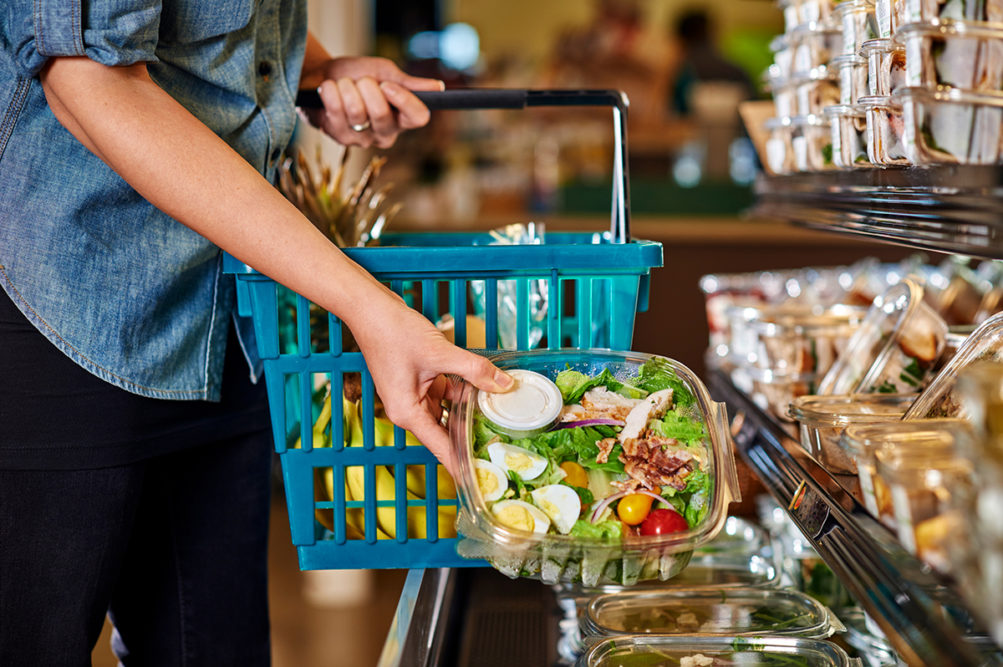The US food landscape is changing as fast as — or even faster — than at any time in recent history, and instore deli and bakery departments are well positioned to take advantage of it, according to a recent webinar from the International Dairy, Deli, Bakery Association (IDDBA) and IRI, “Holiday Season and Year in Review: Trends Driving Shoppers That Matter for 2023.”
“2022 could be best described as a boomerang,” IRI’s Jonna Parker said in the webinar. “Consumer demand came back in 2022, but it didn’t come back in the same way or on the same path as in 2010-2019.”
Affordability and inflation are still very much on consumers’ minds in 2023, Parker said, but fortunately for the grocery perimeter, when people shop the instore deli and instore bakery, affordability isn’t necessarily the first thing on their minds. Convenience, however, is. Look for items like grab-and-go deli lunch meats to be a big perimeter seller in the coming months.
As, if not more, important than “affordable” for many perimeter shoppers is “essential.”
“Charcuterie, high-end cheeses and high-end entrees are essential to many Americans,” Parker said. “And very few people told us they’re eating fewer prepared foods and more from scratch. Retail foodservice is having a moment.”
IRI’s Amanda Evans agreed.
“Prepared foods is really coming back, and consumers are really gravitating to this category. There are tons of growth opportunities.”
Fortunately for instore delis and bakeries, even if some of their products might be more expensive that products in other parts of the store, it’s all relative. Anything at retail, Parker said, is still perceived to be cheaper than foods purchased from foodservice channels.
“What we are seeing is consumers trading up to affordable luxuries,” Parker said. “Convenience and quality still drive sales – shoppers are not racing to the bottom. Despite prices going up, demand is also going up.”
Managers of instore deli and bakery departments will have to redouble their efforts to make sure they stay viable for the ever-growing waves of younger shoppers, Parker said.
“There’s a changing of the guard,” she said. “Millennials and now Gen Z don’t want to shop in the old ways. They’re coming for fresh food next, and we need to be ready for it.”
Perimeter departments will also have their hands full in the near future adjusting to smaller households, which is now the norm. The average American household size is now the smallest it’s ever been, Parker said. And seven out of ten households don’t have people under the age of 18.
“Deli is one of the key places for smaller households to find solutions that the rest of the store doesn’t provide,” she said.
Instore deli and bakery also can seize the opportunity to match the needs of their local customer base, Parker said. Those departments are often more nimble and able to change based on local demand, unlike other sections of the store, which can seem more “tone-deaf.”
Traditional grocers will also have to make sure they’re keeping a close eye on an ever-growing competitor: rival channels.
“Think about how much real estate is given in a Costco to heat-and-eat foods,” Parker said. “It’s substantial. And online, Walmart and Costco are seen by many who shop them as ‘fresh.’”
Traditional grocery’s share of fresh food sales fell from 42% in 2019 to 40% in 2022.
The biggest percentage change in non-traditional share of fresh sales occurred in internet sales, which grew from .8 to 2.5% of all sales.
Other channels seeing growth in fresh sales included club stores (10.1 to 14.4% share), specialty stores (5.9 to 8%) and mass/supercenter (18.7 to 19.2%).
The only other channel to see a decline was discount, whose share of fresh sales fell from 7.8 to 7.4%.
“It’s a brave new world,” Parker said. “We continue see inflation color decision-making. We’ve changed the way we think about food. Our departments need to work harder to keep dollars, we can’t assume that people are in a chase to the bottom. There’s a whole new era of being a culinarian at home, and there’s absolutely room to grow.”

